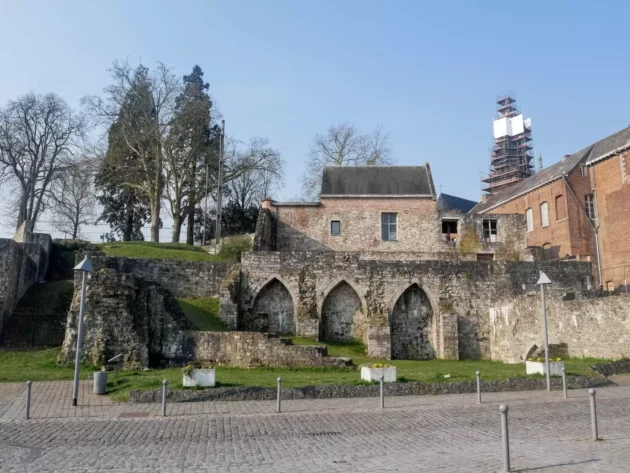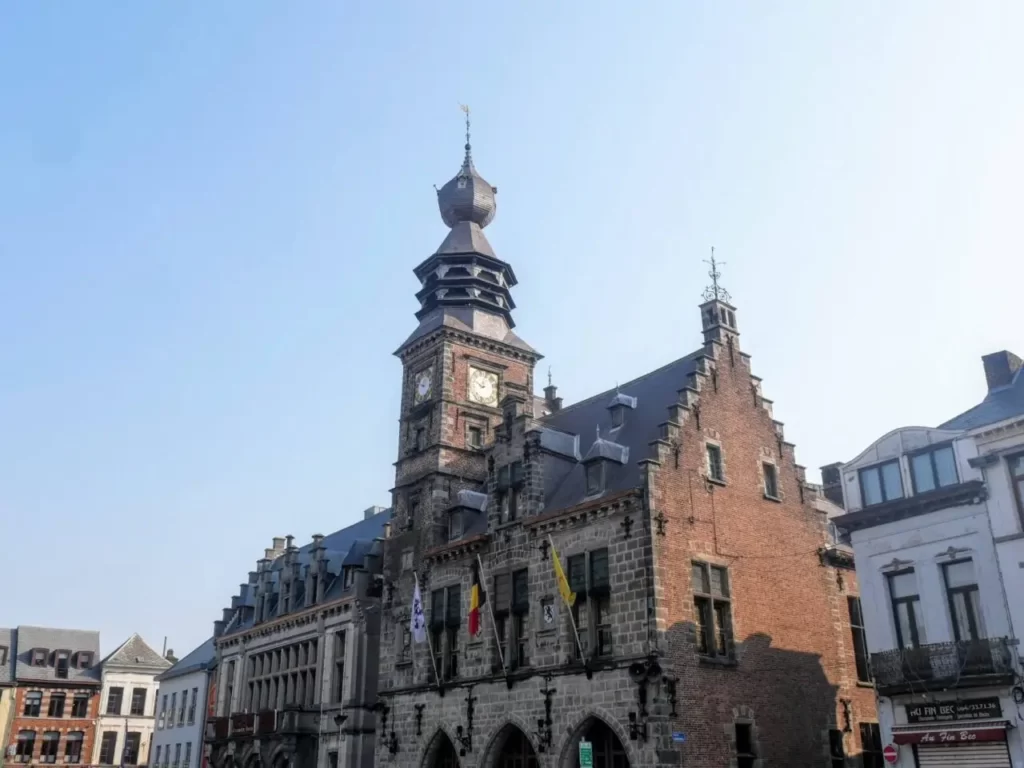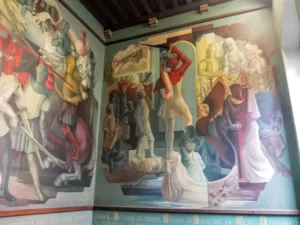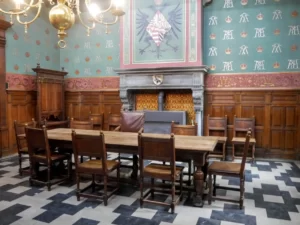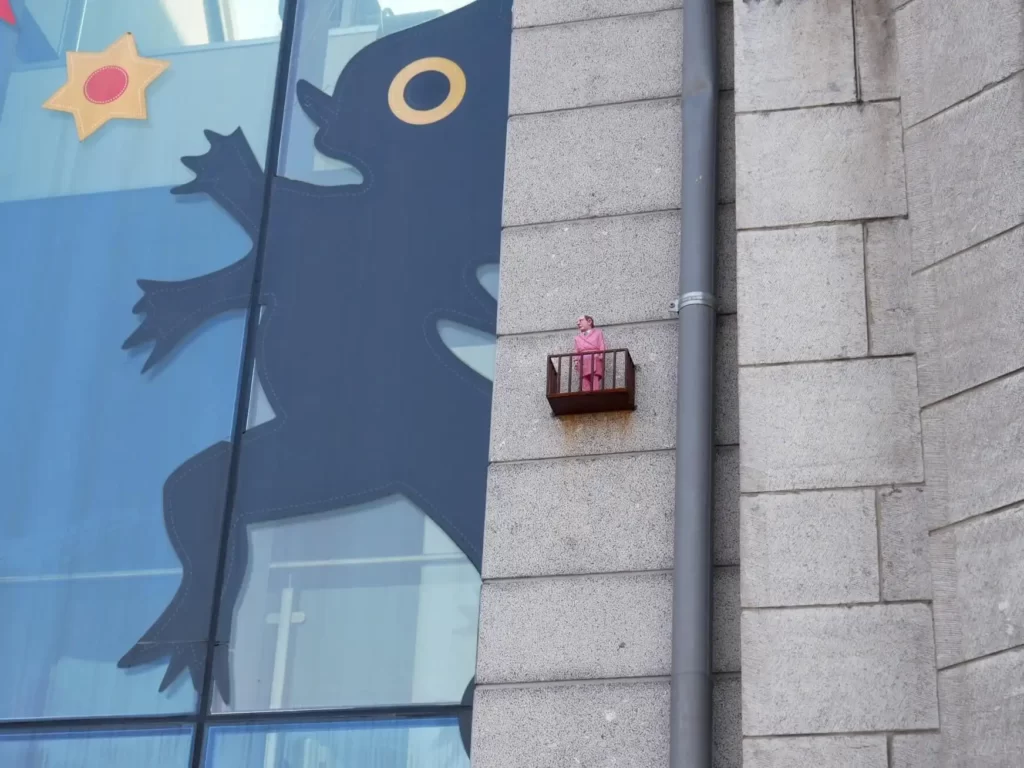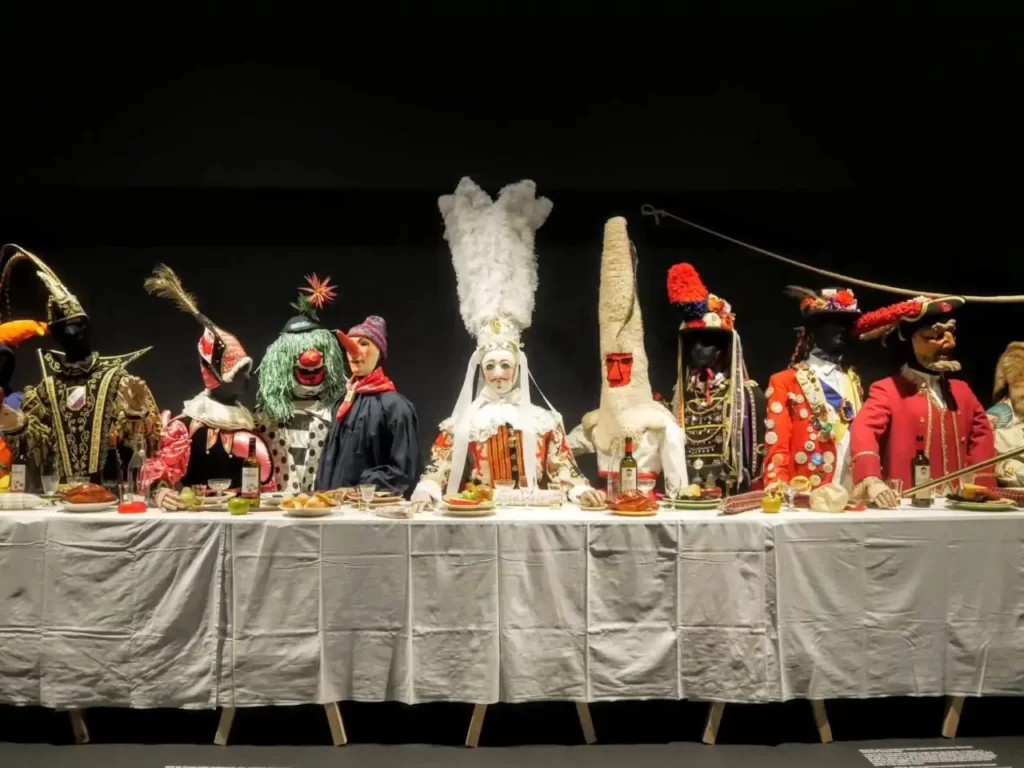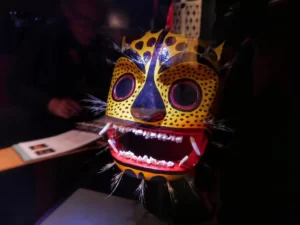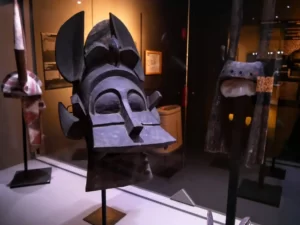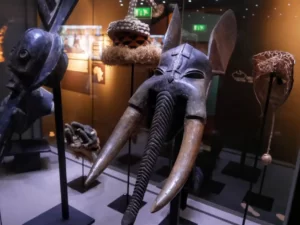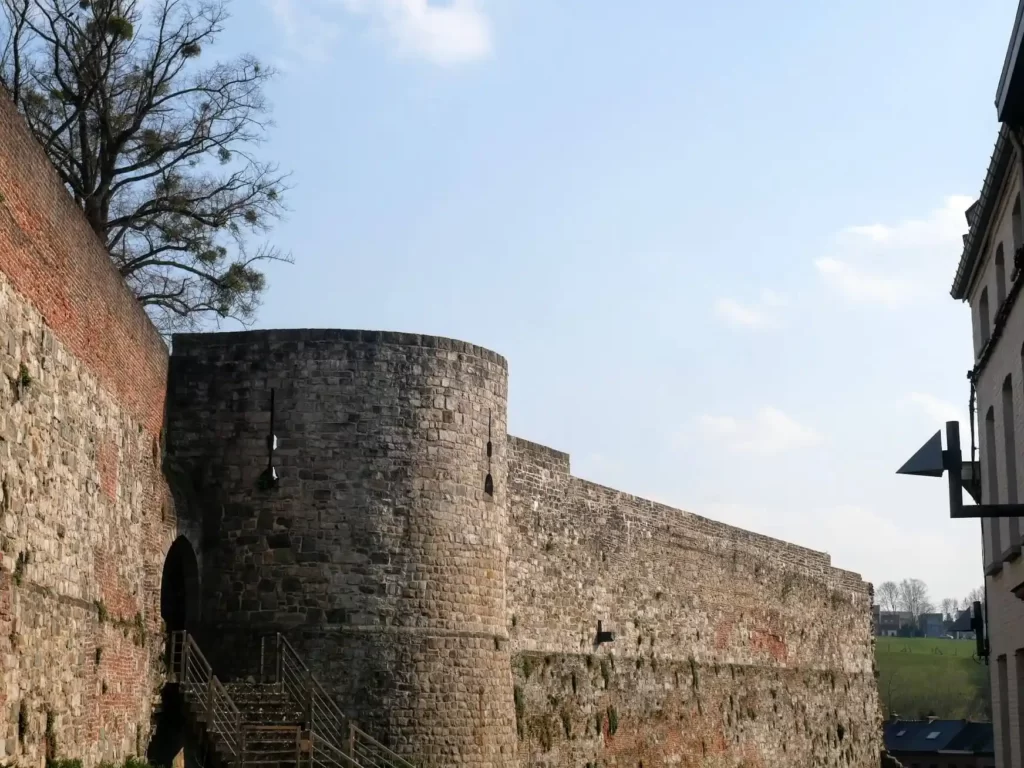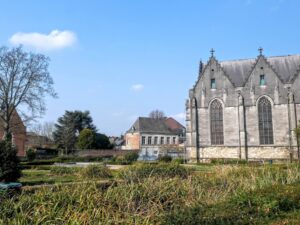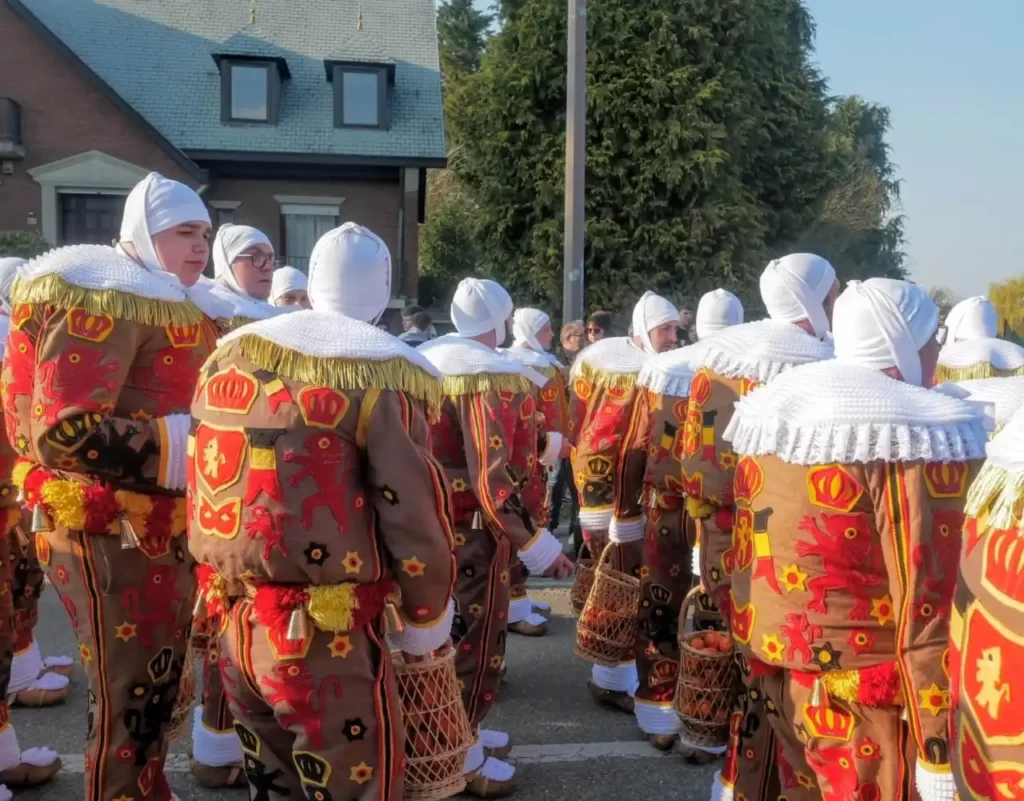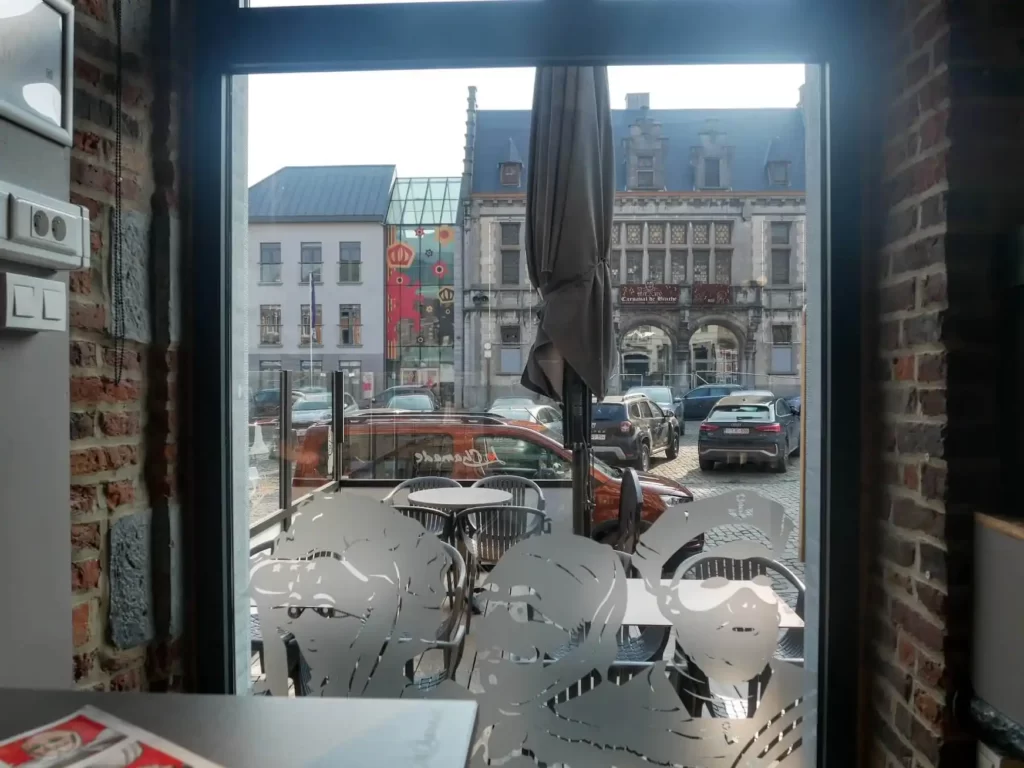Binche is a small charming town located in the southern part of Belgium. Surrounded by the solid medieval walls, wandering its cobbled streets feels like a trip back to history. Being home to so many interesting historical buildings, lovely museums and one of the most fascinating carnivals in the world, this small Belgian town is definitely worth visiting. However, to help you plan your trip there, I created this Binche travel guide with things to see and do in Binche.
Binche Travel Guide
I visited Binche on a press trip to the Hainaut Province in March 2022. Many thanks to their tourism office and their partners for organising it and showing me their beautiful region.
How to get to Binche
Binche is located in the southern part of Belgium. It’s one of the cities in the French-speaking Hainaut Province, that’s part of the Wallonia region. Binche is situated some fifteen kilometres from the French border, just between the two other interesting towns in the Hainaut Province, Mons and Tournai.
You can easily reach Binche from Brussels by train. It will take you a bit more than one hour to get there. Or, you can fly to the nearby Charleroi Airport and quickly get to Binche from it. Here is the link to the Belgian Trains website, where you can check their timetable and buy online tickets.
⤷ Read more: What to see in the Hainaut Province of Belgium
A short history of Binche
Binche is a town with quite an exciting history. Founded back in the 12th century, we actually know the name of the person responsible for creating it. It was Yolande of Gelders who was Duke Baldwin III’s widow. After her husband died, she decided to invest their money into developing a new town – Binche. The first fortification walls surrounding the town were erected by their son.
However, another interesting woman developed the city further – Mary of Hungary. After her husband Louis II, the King of Hungary, died in a battle with the Ottomans, she was asked by her brother, King Charles V, to become governess of the Netherlands. During the 15th century, the Netherlands (Dutch Provinces) roughly included the territory of today’s the Netherlands, Belgium and Luxembourg.
She was a ruler during the religious riots there, so her governance wasn’t an easy one. In the end, she decided to finish her rule and retire in Spain. Mary of Hungary was the patron of art. For example, she was the owner of the Arnolfini Portrait painted by Jan van Eyck.
During her time in Belgium, Mary of Hungary lived in her palace in Binche. The castle was quite an impressive building designed by the famous architect Jacques Du Broeucq. Today, it’s in an archaeological state, and only its traces can be seen. In 1549, her brother Emperor Charles V visited her with his son Philip II. The latter is quite infamous in the Netherlands because he started the long war after the northern Dutch provinces (today’s the Netherlands) declared independence from the Spanish crown.
⤷ Read more: Where to see the paintings of Pieter Bruegel the Elder in Belgium
Travelling around Europe feels like a history lesson. It’s fascinating to connect little bits of information and understand how vital those rulers were for developing the European culture. And how, same as today, Europe was tied with so many cultural influences back then.
In the second half of the 16th century, the city was under French occupation. It remained the site of frequent conflicts between those two countries for the next two hundred years.
The 19th and first half of the 20th century were marked by the industrial revolution. Coal mining was quite significant in the region. You can still see the artificial hills shaping the scenery around Binche.
Today, the city is well known for its famous carnival. And you’ll see that part of the Binche tradition on every corner in the town. From the statues representing different costumes to cafes decoration and street art in the city. In Binche, history and cultural heritage are present on every corner.
⤷ Read more: Following the footsteps of Van Gogh in Belgium
What to see & do in Binche
Binche is a picturesque little Belgian town that could easily be explored on foot. The best way to observe it in a day is to stroll around its city centre and explore some of its historical sites. After a nice traditional Belgian lunch, spend the afternoon visiting the International Carnival and Mask Museum.
Below you’ll find a quick Binche Travel Guide with more recommendations for what to do and see in Binche.
⤷ Read more: History of travelling – How people started to travel
Binche Belfry
On the top of the Gothic Town Hall, you’ll see the Renaissance belfry. Belfries are the communal towers quite common in Belgium. They were a symbol of the city’s power. Belfries were usually hosting the bells that would alarm people in case of emergency. However, they were used for some other purposes, as well.
They are usually self-standing edifices, so the one in Binche is rather unusual. With five other belfries located in the Hainaut Province (Charleroi, Mons, Tournai and Thuin), Binche belfry is inscribed on the UNESCO World Heritage List.
Binche Town Hall
One of the most interesting buildings in Binche is located on its main square. Binche Town Hall was built in a Gothic style, although we still don’t know the exact date when it was created. It served as a magistrate’s court and office but also market hall and butcher’s shop.
The building, which is protected by UNESCO, is still in use for some official town meetings. But also as a place where the mayor welcomes the representatives of the carnival procession each year. It’s a wedding venue, as well. Binche Town Hall could be visited, which I strongly recommend doing. It’s home to some lovely historical furniture and beautiful wall paintings in its hallway.
⤷ TIP: If you take a closer look at a building next to it, you’ll see a cute piece of street art – a miniature statue of a man observing Binche from his balcony. It’s an artwork made by artist Isaac Cordal.
International Carnival and Mask Museum
The carnival tradition is big in the whole region of Hainaut. So, if you plan to visit Binche, be sure not to miss this fantastic museum. Located in a beautiful historical building, it hosts a few exhibitions dedicated to masks and carnival.
I had a guided tour there, so we first started by exploring some of the masks from around the world. From the theatre masks from India to the obituary masks from North America and animal-inspired costumes from Africa. That exhibition gives an overview of how people were masking since Prehistory.
However, the most interesting was the exhibition about the tradition of Carnival in Binche. I loved listening to the carnival music and learning more about how those typical Gilles costumes were made. I learned so much and definitely understood the importance of Carnival tradition in this charming Belgian town.
⤷ TIP: If you’re going to spend only a few hours in Binche, make visiting the International Carnival and Mask Museum your priority. It’s absolutely one of the top places to see in Binche.
Binche city walls
Besides carnival, Binche is also famous for its city walls. The town was first fortified back in the 12th century. However, during the 14th century, the walls were expanded to their current size. Basically, the whole town centre is surrounded by walls, so it feels as you have travelled back in time and entered an old medieval town.
With its size, Binche city walls reminded me of another famous medieval fortified city – Dubrovnik. When walking around its fortifications, I could definitely see some similarities in how their turrets were designed.
The Communal Park
I haven’t explored only the area outside the city walls, but I also climbed them. Around the Saint-Ursmer Collegiate Church is where the Communal Park is located. This is where you’ll find the archaeological remains of Mary the Hungary’s Palace. However, it’s also from where you can enjoy a nice view of Binche and its surroundings.
That area is filled with some historical buildings, remains of an old cemetery, and some other cultural spots. It’s a beautiful place to rest after exploring Binche and enjoy just sitting on a bench surrounded by some lovely trees, flowers and birds singing.
Stroll around its cobbled streets
After relaxing a bit at the Communal Park, I took a walk around the cobbled streets of Binche historical centre. The town is relatively small, and it could be easily explored on foot. Binche is also one of those towns that are best experienced while wandering around it. On each corner, I discovered something new. From the beautiful arch, statue in a city park to the hidden doors in one part of the city walls.
⤷ TIP: I explored Binche on a guided tour and strongly recommend taking one to anyone visiting this town. Each Sunday at 2 pm you can join a guided tour organised by the Binche Tourism Office. Its cost is 4 euros only, and you can register for it on a link here. If you’d rather explore the city on your own, you can enjoy your visit even more by using the Totemus App or Augmented Reality.
Visit the Carnival of Binche
In this Binche Travel Guide, I mentioned how important the carnival is for this region. So, trying to visit it during your stay is one of the things you shouldn’t miss while in Binche.
The carnival of Binche’s origins goes back to the 14th century. Today, it’s listed as the Masterpiece of the Oral and Intangible Heritage of Humanity by UNESCO. The carnival takes place on three days (Sunday to Tuesday) before Ash Wednesday. The celebration consists of dancing, music and other traditional gatherings. The most amusing part to me is how the carnival participants are throwing oranges at the audience.
It’s a cheerful celebration filled with history and absolutely something to put on your list of things to do in Binche.
Some useful tips for visiting Binche
⤷ How much time to spend in Binche – Binche is a small town that can be visited in a day. However, if you’d like to explore its carnival, then reserve the whole weekend for your visit to Binche.
⤷ French language – As in the rest of the Hainaut Province and Wallonia, French is the official language in Binche. You may have some difficulties with English, but in general, you should be okay with it. However, learning a few words of French could definitely go a long way.
⤷ Where to eat & drink – Food in Belgium is delicious! So, researching the best places to eat is definitely something I recommend in this Binche Travel Guide. I had lunch at La Trattoria Italian restaurant and coffee at La Chamade and can recommend both.
⤷ Best time to visit Binche – If you’d like to visit the carnival in Binche, then plan your visit for late February/early March (depending on the date carnival is organised that year). However, if that’s not the main reason for your visit, visiting in Spring, Summer or Autumn could also be lovely. Because of the rain and longer nights, I would avoid visiting it in Winter.
With such a charming city centre, interesting cultural sites and fascinating carnival tradition, Binche is a town definitely worth visiting. Hopefully, this Binche Travel Guide will help you organise your stay and make your visit even more enjoyable.
I visited Binche on a press trip to the Hainaut Province in Belgium organised by their tourism department. Many thanks to everyone at the tourism office, local guides, people from museums and other cultural institutions for organising such a wonderful trip for me. And telling me more about their beautiful region.

